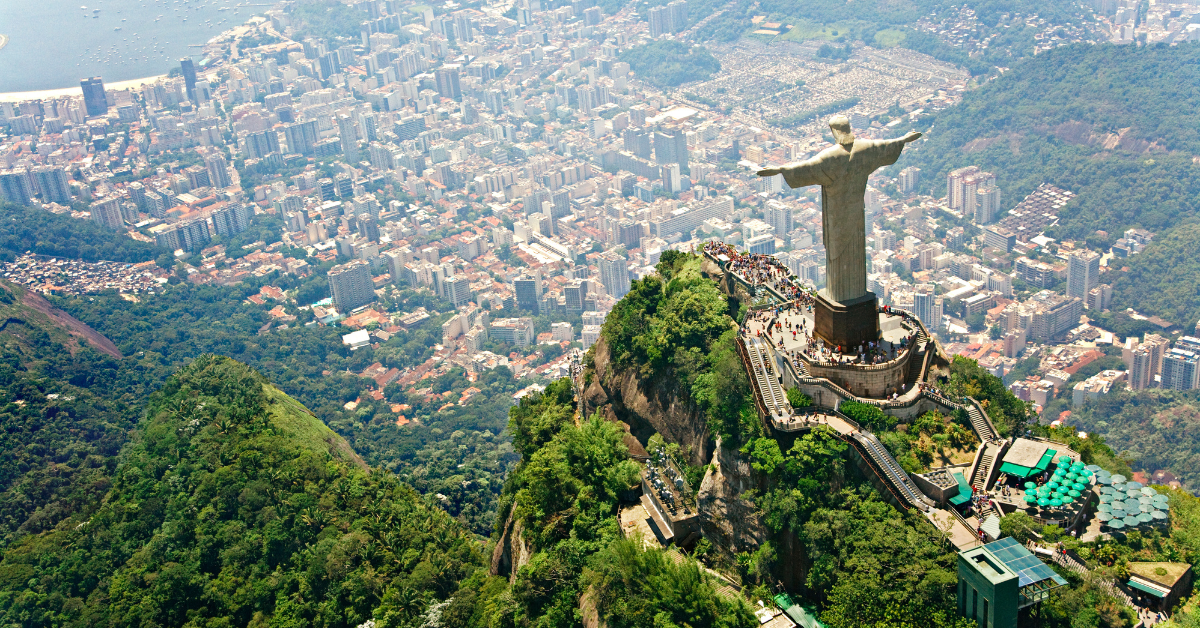Rio de Janeiro is one of Brazil’s most iconic cities, famous worldwide for its Carnival and soccer culture. While it is usually written in katakana in Japan, there is also a rare kanji notation “黎押.” This article explores this unusual writing system and the images Japanese people associate with Rio.
The Kanji Notation “黎押” for Rio de Janeiro
The kanji notation “黎押 (Rio)” is an example of ateji (phonetic substitution), similar to how Brazil is written as “伯剌西爾.” “黎” carries meanings such as “black” or “a group,” chosen mainly for its sound, while “押” supplements the pronunciation.
However, this notation appears only in historical records or certain documents. In daily life, “リオデジャネイロ” in katakana is the standard form, and one would almost never see “黎押” in maps, tourist brochures, or academic references.
Images of Rio de Janeiro Among Japanese People
For Japanese people, Rio de Janeiro evokes a mix of festive and realistic impressions. Popular media and news reports both play roles in shaping these perceptions.
| Image | Description |
|---|---|
| Samba and Carnival | The Rio Carnival, held every year, is famous for its dazzling costumes and parades, frequently shown on Japanese TV. |
| Christ the Redeemer | The giant statue atop Corcovado is a UNESCO World Heritage site and a symbol of Rio. |
| Beautiful Beaches | Copacabana and Ipanema beaches are seen as ideal resort destinations. |
| Soccer Culture | As a core of Brazil’s soccer identity, Rio is strongly associated with the sport. |
| Concerns about Safety | Media coverage often highlights crime and poverty, leading to concerns for tourists. |
Rio de Janeiro as a Sports City
Rio is also known worldwide for its rich sports culture.
| Event / Sport | Details |
|---|---|
| Soccer | The Maracanã Stadium is one of the world’s largest, hosting the World Cup final. |
| Olympics | In 2016, Rio became the first South American city to host the Summer Olympics. |
| Beach Sports | Copacabana is famous for beach volleyball and futsal, with locals and tourists playing together. |
| Capoeira | A traditional Afro-Brazilian martial art blending dance and combat, symbolizing Brazilian culture. |
Soccer and Carnival can be considered Rio’s two great icons, leaving lasting impressions on Japanese people.
Tourism and Cultural Appeal of Rio de Janeiro
Rio combines nature, history, and culture, offering diverse experiences for visitors.
| Attraction | Features |
|---|---|
| Natural Scenery | Sugarloaf Mountain and Tijuca National Park show harmony between city and nature. |
| Music and Dance | Samba and bossa nova represent Rio’s identity, often performed on the streets. |
| Historic Architecture | Colonial buildings and museums reflect the city’s past. |
| Food Culture | Dishes such as feijoada and churrasco are highlights of Rio’s cuisine. |
Things to Keep in Mind in Rio de Janeiro
While Rio is attractive, travelers need to remain cautious.
| Concern | Details |
|---|---|
| Safety | Pickpocketing and robbery may occur even in tourist areas. Avoid nighttime outings and carrying valuables. |
| Traffic | Congestion is common, requiring careful time management for travel. |
| Language | Portuguese is the official language, and English is not widely spoken. Learning simple greetings is useful. |
| Climate | Hot and humid; hydration and sun protection are essential. |
Conclusion
Rio de Janeiro has the rare kanji notation “黎押,” but katakana is the standard and accepted form. For Japanese people, Rio represents “Carnival,” “beaches,” and “soccer” as festive elements, but also “concerns about safety” as a reality.
The 2016 Olympics and other international sports events made Rio more familiar to Japanese people, highlighting its role as a global sports hub. With its blend of nature, culture, and sports, Rio remains a city that inspires both admiration and caution.






